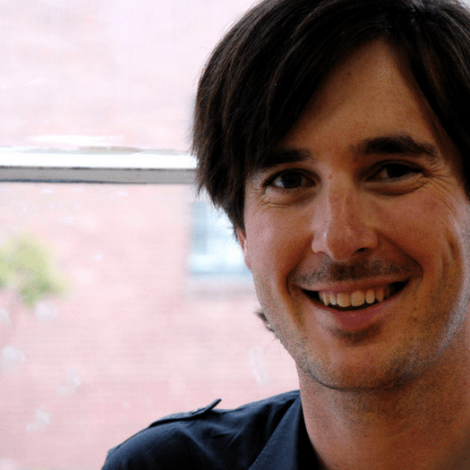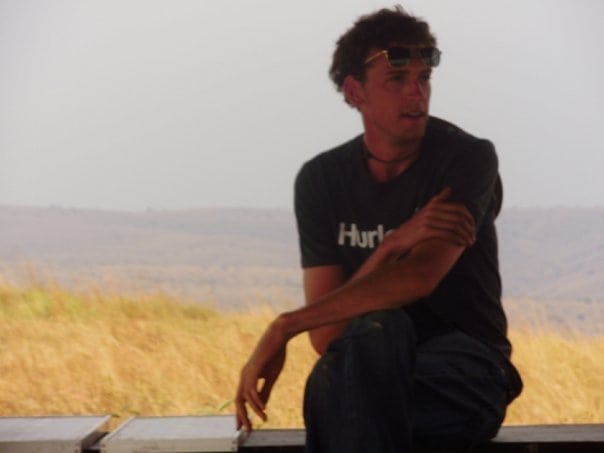Sam Hamner and a team at D-Rev (Design Revolution) in San Francisco, Calif. are making improvements on a prosthetic called the ReMotion Knee. This knee walks the line between a radically low price for people who earn $4 per day or less, and high performance and range of motion.
That matters to the 10 million amputees who have lost one of their legs from above the knee in developing countries worldwide. Hamner’s work touches amputees in India, Sri Lanka, Ecuador and Senegal among other countries. We asked him five questions.
E4C: What are some of the key features in low-cost prostheses?
SH: Our goal at D-Rev is to create prosthetic devices that are affordable to our partner clinics who serve patients living on less than $4 per day.
We believe prosthetic devices can be low-cost without sacrificing quality for our users. This means we are designing the knee to meet or exceed international standards (like ISO), which require the knee to be high-strength and durable.
We also aim to meet the needs of our users – patients and prosthetists – by focusing on aspects of adoption. For patients, we’ve identified features to improve mobility and cosmesis.
This includes designing a prosthetic knee that provides stability while allowing for a natural walking motion, functions seamlessly in rugged and wet environments, minimizes noise when the knee swings into full extension, and shaping the prosthetic so it looks more like a natural knee when worn under clothing. For prosthetists this means designing the knee to work with standard prosthetic components and allowing for critical adjustments of alignment and friction.
E4C: What is one of the big design challenges you’re facing in the ongoing development of the ReMotion Knee?
SH: Currently, we’re modifying the design of the ReMotion Knee for mass production. We’ve determined that injection molding will be the most cost-effective way to produce the knee at large scale, while maintaining quality.
We’ve also improved the design based on patient feedback. Our partners at JaipurFoot Organization have already remobilized over 4700 patients with the JaipurKnee (the first version of ReMotion). We thought patients would be focused on things like the knee’s stability. But resoundingly we’ve been told that the knee made too much noise when swinging into full extension. Even if the knee wasn’t visible under clothing, this noise would call attention to their device. Many amputees we’ve met are still stigmatized by society, so it’s extremely important for them to not be identified as wearing a prosthetic. So we’ve changed the design to minimize noise and have shaped the knee so it looks more natural under clothing.
E4C: Story time. Would you tell a short story about one of the moments when you knew were in the right line of work?
SH: In September 2009, I stepped off a plane in Addis Ababa with a suitcase carrying about 100 lbs (45 kg) of parts for a product we called “The Pepper Eater” – a small hand-cranked grinder that helps women in rural Ethiopia process red chili peppers more safely and efficiently. My teammate and I had one month in Ethiopia to build our prototypes, put them into the hands of various users, and get meaningful feedback.
As we traveled around the country, we heard stories of the rich tradition and process that each family has for grinding peppers into the unique Ethiopian spice called berbere. We also met multiple groups of women who tediously processed peppers by hand just to make a few extra dollars for their children’s school uniforms and supplies. One group told us, “We want this technology so that we don’t need to go to town for processing and can make a profit by selling to our community.” It is the story of these women, who are entrepreneurs looking for ways to provide for their families, that has stuck with me and continues to inspire my work.
By conducting user studies, we learned that The Pepper Eater met a real and significant need (we sold half of our prototypes to actual end-users). It also quickly showed us how to improve our design. Originally, we had the idea that our users would want a small, personal device. But once we gave the prototypes to women who processed peppers for income, they almost resoundingly told us they wanted a device mounted in the ground. Portability was not a desired feature. Having such compelling user feedback pushed us to redesign our product and the underlying business model for sales and distribution.
With this experience, I gained a deep empathy for a culture half a world away; but it also challenged me to grow and adapt as a designer and social entrepreneur, as I realized that technology development was only a small part of delivering a product that makes an impact. Since then, we licensed the technology to Compatible Technologies International to bring the pepper shredder to market.
E4C: What do you think is a dead end in your field that some people just won’t let die?
SH: More and more I am seeing that delivery models prioritizing local manufacturing are struggling. Ideally, local manufacturing would help bring jobs and build capacity for communities. But managing the quality of products is technically and logistically difficult. And quality is not something we are willing to compromise. We’ve seen many of our friends in the space, like KickStart pumps and Whirlwind Wheelchair, shift their strategy from local to centralized manufacturing. And that’s one of the reasons why we’ve chosen a centralized production model for ReMotion. The prosthetics industry is diverse and fragmented, and we believe we can have the greatest impact, produce the highest quality knee, and deliver the greatest value to patients and clinics by owning manufacturing and quality control.
E4C: 10 years from now, what changes would you like to see as a result of your work now?
SH: There is an unreliable supply of components for prostheses, which is a big part of the reason that only five percent of amputees in developing countries have access to them. In the next few years, I hope that we trigger development of a global supply chain that allows clinics around the world to make a phone call or send an e-mail and easily get affordable, high-quality orthotics and prosthetics.
We hope to create an ecosystem with robust distribution channels, improved follow-up and impact assessment, and new components that meet the needs of the world’s amputees. We’re already seeing new players entering the market and an increase in regional pipelines to bring more skilled prosthetists into the profession. Ultimately, our goal is that above-knee amputees living in developing countries are remobilized at rates that match affluent economies.

